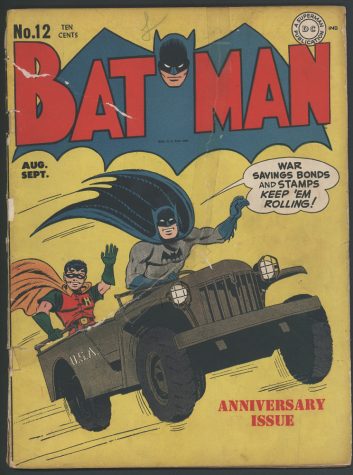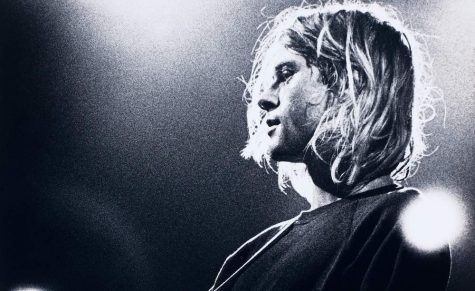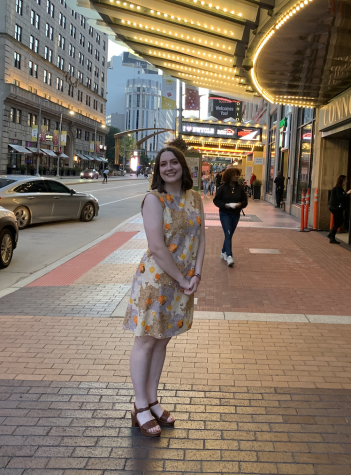The darkest of knights–”The Batman” review
Mar 24, 2022
Modern filmmaking has been infiltrated by the rinse and repeat blockbuster superhero movie for the past several years. In order for a superhero movie to shine bright in this era, depth and excellence are essential –– Matt Reeves’s “The Batman” brings exactly that.

Hollywood’s repeated retelling of the Batman character is for good reason, as numerous successes have come from the comic. “The Dark Knight” is highly regarded as not just the best Batman movie, but as one of the greatest movies of all time (ranked number three on IMDb’s top rated movie list). But why is he viewed as one of the best superhero figures to grace the media?
Over his 83-year history, Batman has done something that so many of us wish we could: used fear as a means of gaining strength. Byron Lafayette wrote on Fansided that “Individuals spend their whole lives running from fear and seeking to overcome it. Batman is just the opposite. He embraces his fear and then turns that fear on those he seeks to bring to justice.” It can be cathartic to see a hero defeat darkness while embracing his own “shadow,” a Jungian concept Lafayette mentions in the blog post. The “shadow” is “described as being the sum of all human weaknesses, anger and other animal instincts.” Batman is in tune with his “shadow,” allowing his animalistic instincts to come out for a hardened dark form of (In)justice.
More than just a character, it is evident what makes Batman so easily admired, but what about the newest film adaptation of his universe? The story takes place in a darkened, modern day Gotham City, where Bruce Wayne (Robert Pattinson) has been Batman for the past two years. He is a sullen and determined force in the city, collaborating with Commissioner James Gordon (Jeffrey Wright) to fight the human chaos of Gotham. Trouble arises when the Riddler (Paul Dano) emerges from the shadows, using puzzles to lead Batman along his hunt for him. The story is enriched by Catwoman (Zoë Kravitz), Batman’s butler Alfred Pennyworth (Andy Serkis) and the Penguin (Colin Farrell).
While the movie does come in at an intimidating two hours and 55 minute runtime, there is so much that keeps the movie moving at a dizzying pace. The part that stood out most were the performances from every actor in it. There was not one poorly done job in regard to acting, with Robert Pattinson and Paul Dano being the shining stars.

Pattinson, known best for portraying Edward Cullen in the “Twilight” franchise, “Tenet” and indie films like “The Lighthouse,” has been a well-established actor since the 2000s. While he might not have been seen as a serious actor at the beginning of his career, he has proved himself to be dedicated and talented in his craft. He was able to bring a weirder, cooler side to Bruce Wayne, showing his struggles in his role as Batman and in discovering information about his family and past (with a more in-depth dive into the Wayne’s likely to come in sequels). “I definitely didn’t expect such a dark and gritty performance from Pattinson, especially considering his past acting experience in ‘Twilight,’” says Nick Rodriguez ‘24. “I think he gave the most accurate Batman portrayal to date.” The complexities of Batman are shown fully through Pattinson’s acting, giving a noteworthy and memorable performance.
Dano, the film’s main villain, is another talented actor with a strong filmography to back his talent. “There Will Be Blood,” “Prisoners,” “Little Miss Sunshine” and “Swiss Army Man” are just a few titles where he shines, each in vastly different characters. He was no disappointment playing Edward Nashton, better known as the Riddler. He brought the perfect amounts of creepiness and intelligence to his part. It has been cited that Dano’s Riddler is modeled after the Zodiac Killer, as the character uses intricate ciphers to get messages to Batman. Utilizing that model was a genius decision–matched with the genius of Dano in the part.
Visually, “The Batman” makes the notorious Gotham darkness even darker, and it matches the story well. The film was shot in the United Kingdom (specifically London, Liverpool and Glasgow), which contributes to the old-money aesthetic of parts of the city. Other sets were created to represent a Times Square-esque environment, showing the modern take on Batman’s stomping grounds. The atmosphere that the cinematography creates is perfect for a Batman movie, paired with a constant downpour and overcast skies. The camerawork and visuals alone are enough to keep a viewer hooked, so they work in enhancing the plot well.

Another noteworthy aspect of the film is the music, with the score orchestrated by Michael Giacchino (famously known for his heart-wrenching “Married Life” from “Up”). The score features a heavy orchestra and eerie sounds that match the film’s darkness. The score can add the needed edge to make a scene just tense or unnerving enough. The film also features Nirvana’s “Something In The Way,” as it was cited that director Matt Reeves took a lot of inspiration from the band’s frontman, Kurt Cobain. The song pairs well with Bruce Wayne’s angst and his grunge look.
Overall, “The Batman” is an easy film to recommend to anyone from the average movie watcher to the comic book enthusiast. Though the movie is dark (physically and in its subject matter), it is a great take on modernizing superhero stories–humanity is brought to “The Batman.” This is a film for the theater, so make sure to see it before it hits the at-home viewing platforms.
Claire Schuppel is a sophomore from Lakewood, Ohio. She is the Arts and Life Editor for the Carroll News. You can reach her at cschuppel24@jcu.edu.












